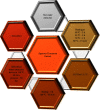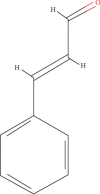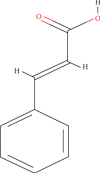Aqueous Extract of Cinnamon (Cinnamomum spp.): Role in Cancer and Inflammation
- PMID: 37215636
- PMCID: PMC10195174
- DOI: 10.1155/2023/5467342
Aqueous Extract of Cinnamon (Cinnamomum spp.): Role in Cancer and Inflammation
Abstract
Cinnamon (Cinnamomum spp.; family Lauraceae), a plant widely used as a spice and flavoring agent and in the perfume industry, has high therapeutic value. However, the components and chemical properties of cinnamon extracts vary depending on the part of the plant, the method, and the solvent used for extraction. Green extraction methods using safe and green solvents have gained increased interest in recent years. Water is an environmentally friendly and safe green solvent widely used for preparing cinnamon extracts. This review focuses on the various preparation techniques for the aqueous extract of cinnamon, its major bioactive components, and their beneficial roles in different pathological conditions, specifically cancer and inflammation. The aqueous extract of cinnamon contains several bioactive compounds, such as cinnamaldehyde, cinnamic acid, and polyphenols, and exerts anticancer and anti-inflammatory properties by altering key apoptotic and angiogenic factors. The whole extract is a better anticancer and anti-inflammatory agent than the purified fractions, indicating a synergistic effect between various components. Studies have indicated that aqueous cinnamon extract has immense therapeutic potential, and to better understand its synergistic effects, extensive characterization of the aqueous extract and its potential to be used with other therapies should be explored.
Copyright © 2023 Shubrata Khedkar and Minhaj Ahmad Khan.
Conflict of interest statement
The authors declare that they have no conflicts of interest.
Figures







References
-
- Cooper G. M. The Cell: A Molecular Approach . Sunderland, England: Sinauer Associates; 2000. The development and causes of cancer. https://www.ncbi.nlm.nih.gov/books/NBK9963/
-
- Hanahan D. Hallmarks of cancer: new dimensions. Cancer Discovery . 2022;12(1):31–46. doi: 10.1158/2159-8290.CD-21-1059. - DOI - PubMed
Publication types
LinkOut - more resources
Full Text Sources
Miscellaneous

